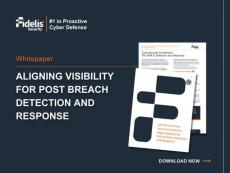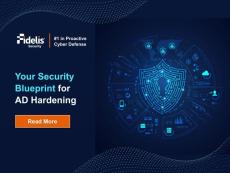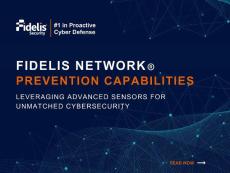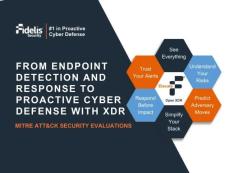Aligning Visibility for Post Breach Detection and Response with Fidelis Elevate
In today's day and age, every organization faces many cyber adversaries, and the reality is that you cannot prevent all cyber-attacks. Timely threat detection and response are the only ways to prevent the escalation and spread of attacks. This whitepaper provides insights into seeing more across your environment by aligning visibility.





